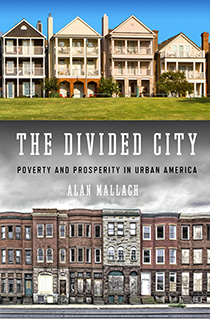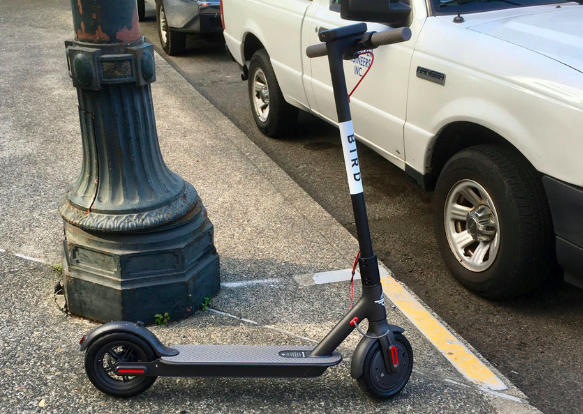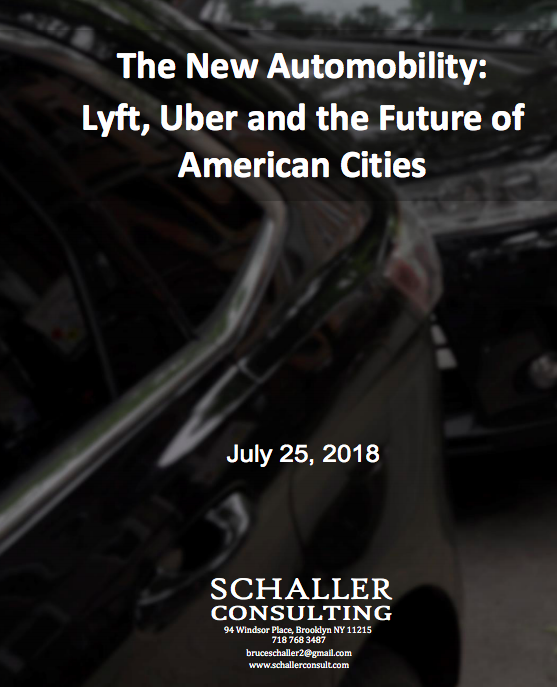What City Observatory did this week
1. Your summertime must read: Alan Mallach’s Divided City. We have a review of this newly released book, which we think every urbanist ought to read. Although written primarily from the perspective of lagging Rust Belt cities, Mallach’s book has a lot to say to urbanists through the nation. He argues strongly that our focus needs to be on the continuing (and worsening) problems of concentrated poverty. Particularly in the Rust Belt, gentrification is rare, and far from being malign, is actually one key to reviving cities and widening opportunity.
2. What E-scooters tell us about road pricing. E-scooters are rolling out in cities around the country, and local governments are wrestling with tough questions about how they ought to be regulated. In Portland, Bird scooters is paying the city $1 per scooter, per day to cover costs of city-provided infrastructure and to build bike lanes and promote safety. That got us thinking: if a 25-pound, 20 mile per hour electric scooter pays the city a dollar a day for using streets, what would be a proportionate charge on on a two-ton, 60 mile per hour fossil-fuel vehicle? Whether you look at size and space requirements, road damage, pollution, or danger to public health, cars ought to be paying a lot more than a dollar a day to use city streets; yet in most cases they pay almost nothing. If we charged cars anything approaching the costs they create, we’d have a lot less driving, pollution, traffic deaths, and we’d have better cities. If scooters help us come to that realization, they’ll have really transformed urban transportation.
Must read
1. Blame ride-hailed vehicles for traffic congestion. Bruce Schaller, former New York Transportation Commissioner has a new report summarizing much of the research on ride-hailing, including his own. His report: Automobility: Lyft, Uber and the Future of Cities, argues that the ride-hailed vehicles are overwhelming city streets, and supplanting transit ridership, rather than reducing private car ownership. Schaller also points out that there’s been little reduction car ownership-in most cities the number of registered vehicles is still growing as fast as population.
2. Don’t blame ride-hailed vehicles for traffic congestion. Its the unpriced streets, not the ride-hailed vehicles, says Robin Chase. Chase, co-founder of car-sharing giant Zip-Car, argues that its fundamentally wrong-headed to blame ride-hailed vehicles. for traffic congestion. Last time we checked, a ride-hailed car takes up exactly the same amount of street space as a privately operated motor vehicle. It will take a while before the prevalence ride-hailing prompts a significant number of households to give up their own privately owned vehicles. Rather than demonizing Uber and Lyft, Chase urges that we work to implement fair user fees across all modes to encourage more efficient use of our street.
3. Gabriel Metcalf’s Exit Interview. For much of the past two decades, Gabriel Metcalf has been at the helm of SPUR, the San Francisco-based urban advocacy group. As we all know, the Bay Area has been the center of the maelstrom of economic change, innovating new technology, and with the problems of housing and transportation coming at them at a speed and scale un-seen anywhere else. Metcalf is shortly headed to Sydney, Australia, to lead an urban non-profit there. He sat down with the San Jose Mercury News, to share a few parting thoughts. The whole interview is worth a read, but we were particularly taken with Gabriel’s short explanation of why we ought to care about cities:
Cities are a vessel for holding human difference. That’s what a city is. And that essential purpose of holding human difference becomes a platform for a lot of other really interesting things. Cities end up fostering creativity of all kinds because they bring so many different kinds of people together. That shows up in political movements, it shows up in artistic movements, and it shows up in economic innovation, as well. And, it also turns out cities are incredibly ecologically efficient.
New Knowledge
Americans spend less time traveling now than in the 1990s. For all the hand-wringing talk you hear about rising congestion and lengthening commutes–and the utterly phony estimates of what this costs us–the most comprehensive measure of how we spend our most precious resource–time–shows that Americans are spending dramatically less time traveling now than they did two decades ago. The State Smart Transportation Initiative reports on research looking at data gathered as part of the American Time Use Survey, which asks a statistically representative sample of Americans to keep a daily diary of their activities. The reports show that the amount of time spent traveling peaked in the 1990s at 10 hours per week, and has declined more than 15 percent since then, to less than 8.5 hours per week.
The trend is influenced by a wide variety of factors, including a slowing rate of job growth relative to population, and more time spent at leisure (which often takes place at or near home). But a key factor may have been the growth and subsequent slowing of highway construction. As SSTI’s Chris McCahill reports, “The authors note that rather than reducing congestion, massive highway construction from 1960 to 2000 likely motivated this sprawling growth pattern.” Bottom line: this is more powerful evidence of induced demand. Building roads prompts us to drive further and travel more, rather than saving us time. And if we’re concerned about the amount of time Americans spend traveling, building more roads will only make that problem worse, not better.
In the News
Joe Cortright’s observations on the economic contributions of Portland’s hundreds of food carts were featured in the Portland Business Journal (paywall).
CityLab cited our analysis of the location trends of young, well-educated adults in its article “Do Millennials Prefer Cities or Suburbs? Maybe Both.”
Writing at The American Conservative, Matt Robare quoted City Observatory’s look at Houston’s Katy Freeway, widened to 23-lanes at a cost of billions, and now even more congested than ever.





